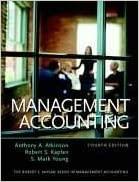
Demonstration Problem 5-5 Demonstration Problem 5-5 introduces accounting for inventories with multiple layers and prices. The objective here is to show how cost flow methods differ from each other. For example, does FIFO or LIFO produce a higher gross margin? We want to see how different cost flow methods affect a particular statement (e.g., what does the income statement look like under FIFO, LIFO, and weighted average?). We, demonstration Problem 5-5 use a vertical format to prepare income statements, balance sheets, and statements of cash flows, Review the information and solutions and notice the following comparisons: A. Notice that the cost flow method does not affect revenue. B. Have the students verify that the amount of cost of goods sold plus ending inventory is equal to the amount of cost of goods available for sale. In other words, the total product cost is the same for all cost flow methods. The difference lies in how the cost is allocated between cost of goods sold and ending inventory. C. With the exception of tax consequences, cash flow is not affected by the cost flow method. Demonstration Problem 5-5: Inventory Cost Flow Assumptions Crystal Apple Sales Company began 2018 with cash of $2,000, inventory of $3,600 (200 crystal apples that cost $18 each), $2,500 of common stock, and $3,100 of retained earnings. The following events occurred during 2018. 1. Crystal Apple purchased additional inventory twice during 2018. The first purchase consisted of 800 apples that cost $20 each, and the second consisted of 1,200 apples that cost $24 each. The purchases were on account. 2. The company sold 2,040 apples for cash at a selling price of $40 each. 3. The company paid $44,800 cash on accounts payable for inventory purchases. 4. Crystal Apple paid $26,000 cash for operating expenses. 5. Assume an income tax rate of 30 percent. Crystal Apple paid income tax expense in cash Required a. Determine the ending inventory and cost of goods sold using the three different cost flow assumptions: FIFO, LIFO, and Weighted Average. b. Prepare an income statement, a balance sheet, and a statement of cash flows under each of the three cost flow assumptions







